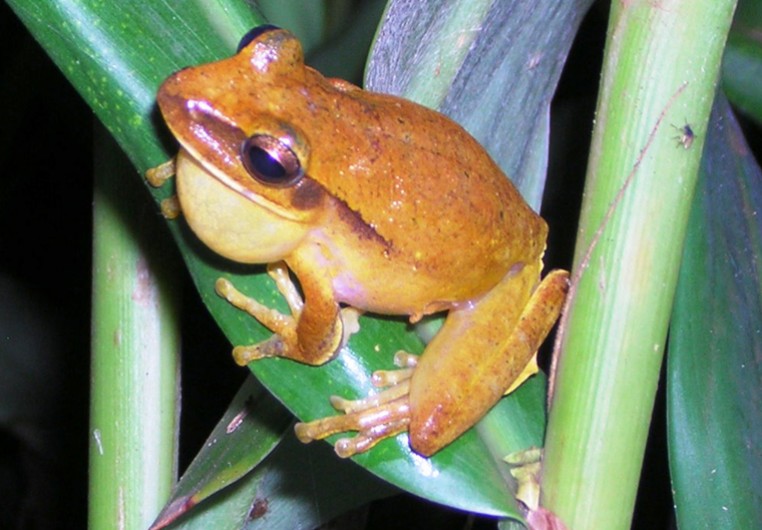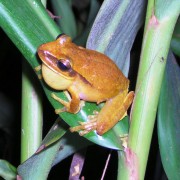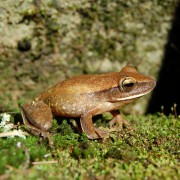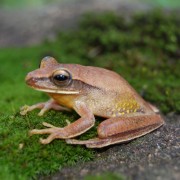Biodiversity
 White-Spotted Treefrog
Hypsiboas albopunctatus | Spix, 1824
White-Spotted Treefrog
Hypsiboas albopunctatus | Spix, 1824

Vocalization

Characteristics: Medium-size species measuring approximately 6.0cm in length. It has a long, narrow head and elongated snout with a dark lateral stripe on it. Its color varies from yellow to brown, with a reddish shade predominating. It has transversal dark stripes on it back, and its thighs show characteristic yellow dots on their inner face. Both males and females have sexual thorns in their paws.
Distribution: This species occurs in the central highlands, mainly in Southeastern Brazil, and from Paraná to Argentina.
Habitat: Formations open to forests and in the edges riparian and gallery forests.
Habits: Crepuscular, nocturnal, and arboreal species often found in swamps and wetlands on low, medium, and tall vegetation. It can also be found on land, in open plots. During the evening it croaks in the low vegetation surrounding the edge of the water, artificial garden lakes or lawns.
Diet: Insects and arthropods.
Breeding: Oviparous, and couples may stay embraced (mating) for up to three hours prior to spawning, which produces more than 700 eggs and takes about five minutes to complete. The spawn is circular shape and deposited on the surface of the water. This species' reproductive period may take place only in the hot and humid season, or extend over most of the year. It vocalizes preferably in open areas, on the ground or on foliage on the banks of streams or lentic ecosystems, whether permanent or temporary.
UFRA: This species was spotted in Wetlands with Herbaceous Plants, Restored Native Forests, Drainage Ditches, in Forests in Spontaneous Regeneration, and in Fields in Spontaneous Regeneration. Always associated with vegetation on the margins of water bodies.






